AWS CodeCommit
Overview
For a developer, managing the assets and keeping the entire focus on production is essential. To manage the assets (the repository administration and maintenance), Amazon Web Services provides a secure and fully managed service, i.e., AWS CodeCommit. It has proved to boost an organization's performance in various aspects.
What is AWS CodeCommit?
AWS CodeCommit is a cloud-based version control service hosted by Amazon Web Services. It allows us to privately store and manage repositories ( documents, source code, and binary files) in the cloud. It is comfortable for teams to collaborate securely on code, with contributions encrypted in transit.
 In addition, CodeCommit eliminates the problem of managing your source control system or worrying about scaling its infrastructure. It sustains the standard functionality of Git and works seamlessly with existing Git-based tools.
In addition, CodeCommit eliminates the problem of managing your source control system or worrying about scaling its infrastructure. It sustains the standard functionality of Git and works seamlessly with existing Git-based tools.
Why Use AWS CodeCommit?
AWS CodeCommit helps the working team manage code better and allows collaboration between team members. This allows us to explore the benefits of CI/CD (Continuous Integration and Continuous deployment).
Continuous Integration is the practice of automatically and automatically testing each change made to the code as early as possible. On the other hand, Continuous Deployment is the practice of pushing the tested changes to production automatically and as early as possible.
For example, for a DevOps engineer, the entire focus should be on production instead of maintaining updates. So, here comes the role of AWS CodeCommit, which eliminates the tasks of managing the resources by providing high service availability and durability.
Features of AWS CodeCommit
Features provided by AWS CodeCommit are:
Collaboration
- AWS CodeCommit is designed for collaborative software development, where it can easily commit, branch, and merge the code.
- It allows us to maintain control of projects in a team efficiently.
- Supports pull requests, which provide a mechanism to request code reviews and examine the code with collaborators.
Encryption and Access Control
- AWS CodeCommit is encrypted through AWS Key Management Service (AWS KMS) using customer-specific keys.
- It uses HTTPS or SSH to transfer the files to and from AWS CodeCommit.
- It uses AWS Identity and Access Management to control and monitor via AWS CloudTrail and AWS CloudWatch.
High Scaleable and Durability
- AWS CodeCommit helps scale up or down as per needs.
- It is capable of handling large repositories with multiple files and branches.
- It stores the repositories in an encrypted way across multiple facilities like Amazon S3 and Amazon DynamoDB. This architecture increases the durability of repository data.
Easy Access and Integration
- AWS CodeCommit is easily accessible using the AWS Management Console, AWS CLI, and AWS SDKs to manage your repositories.
- It can easily integrate with other Amazon Web Services and third-party services quickly.
Migration and Notifications
- CodeCommit easily migrates from any Git-based repository.
- It uses the Amazon SNS service AWS to receive notifications for events impacting the repositories.
How Does AWS CodeCommit Work?
AWS CodeCommit is standard for users of Git-based repositories, but those who are unknown should find the transition to it. It provides a console for:
- Easy creation of repositories
- Listing of existing repositories and branches.
- Finding information about a repository
- Cloning repositories to local computer
- Creating a local repo to make changes, and
- Pushing the changes made to the CodeCommit repository.
All of this involves only a few simple steps. The command line (CLI) or the GUI-based editor provided by AWS can be used to work with AWS Code Commit.
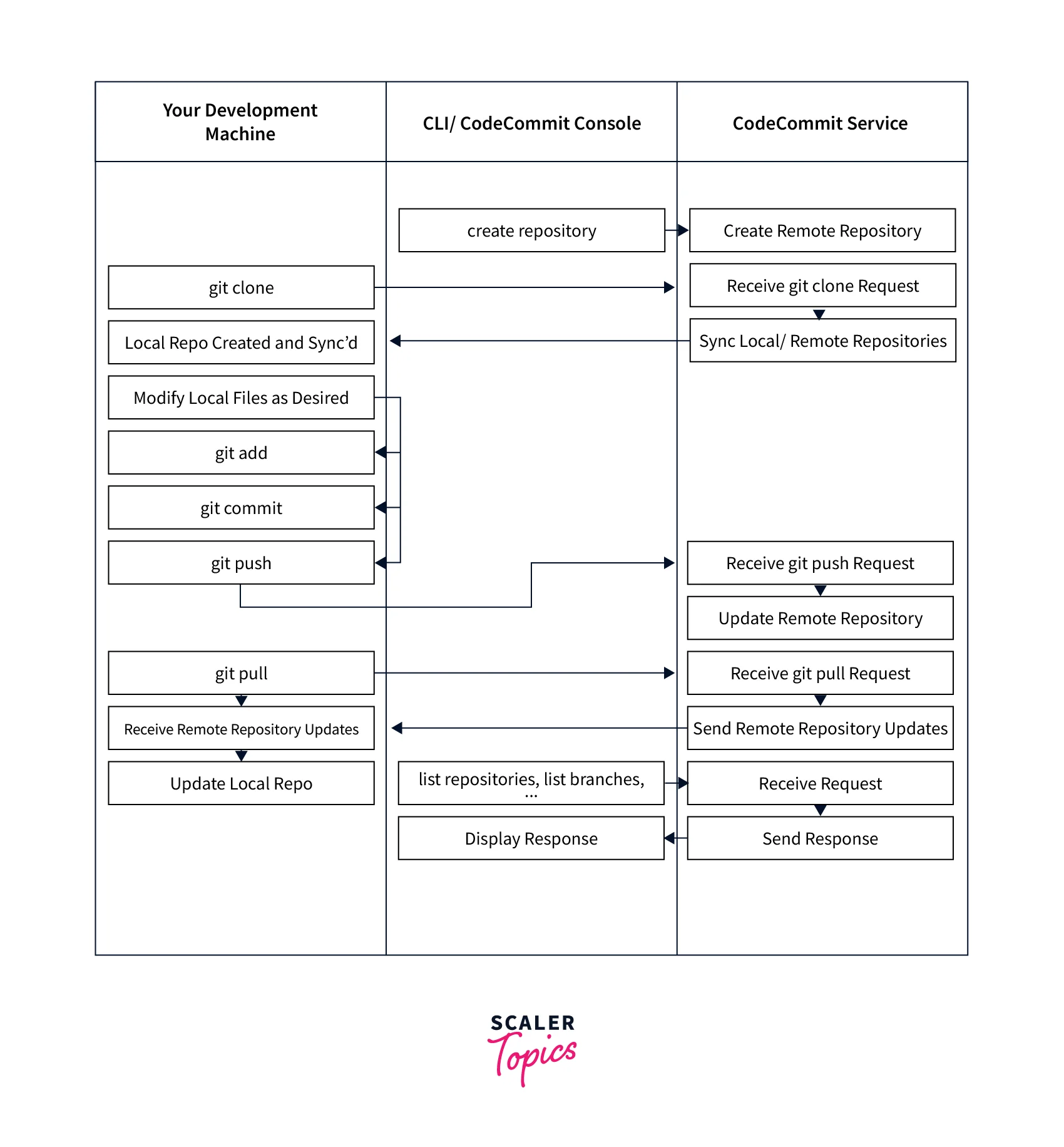 The above figure shows how to use the various resources available to work with AWS Code commit.
The above figure shows how to use the various resources available to work with AWS Code commit.
Create a Repository In CodeCommit
Let's try to create a repository on CodeCommit. Within the newly created repository, we will try to commit changes and view the changes.
The following steps are involved in starting with it:
- Go to the AWS login page and log in to your account.
-
After login, a page is open just like the image shown below.!
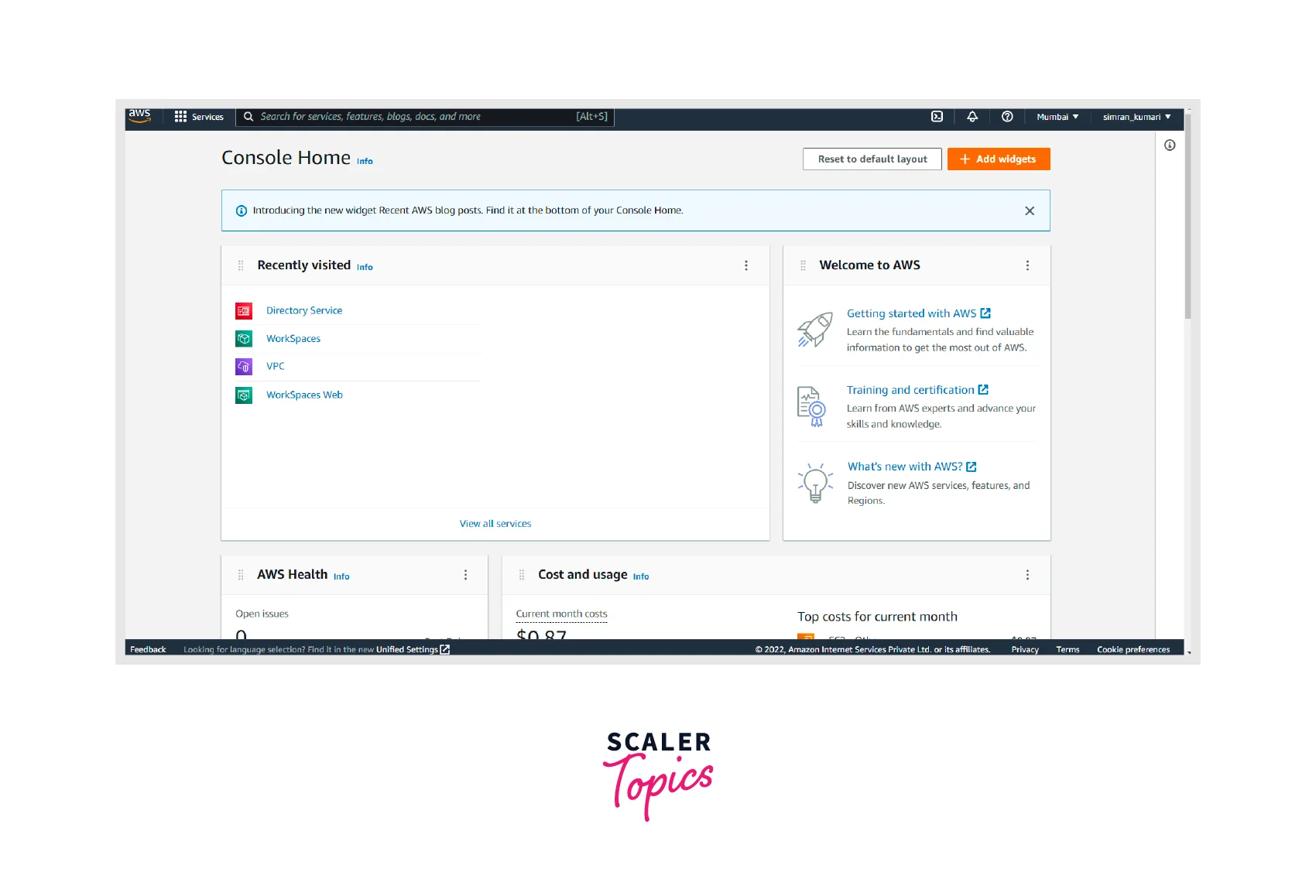
-
Search for CodeCommit in the search bar and click the CodeCommit service option.
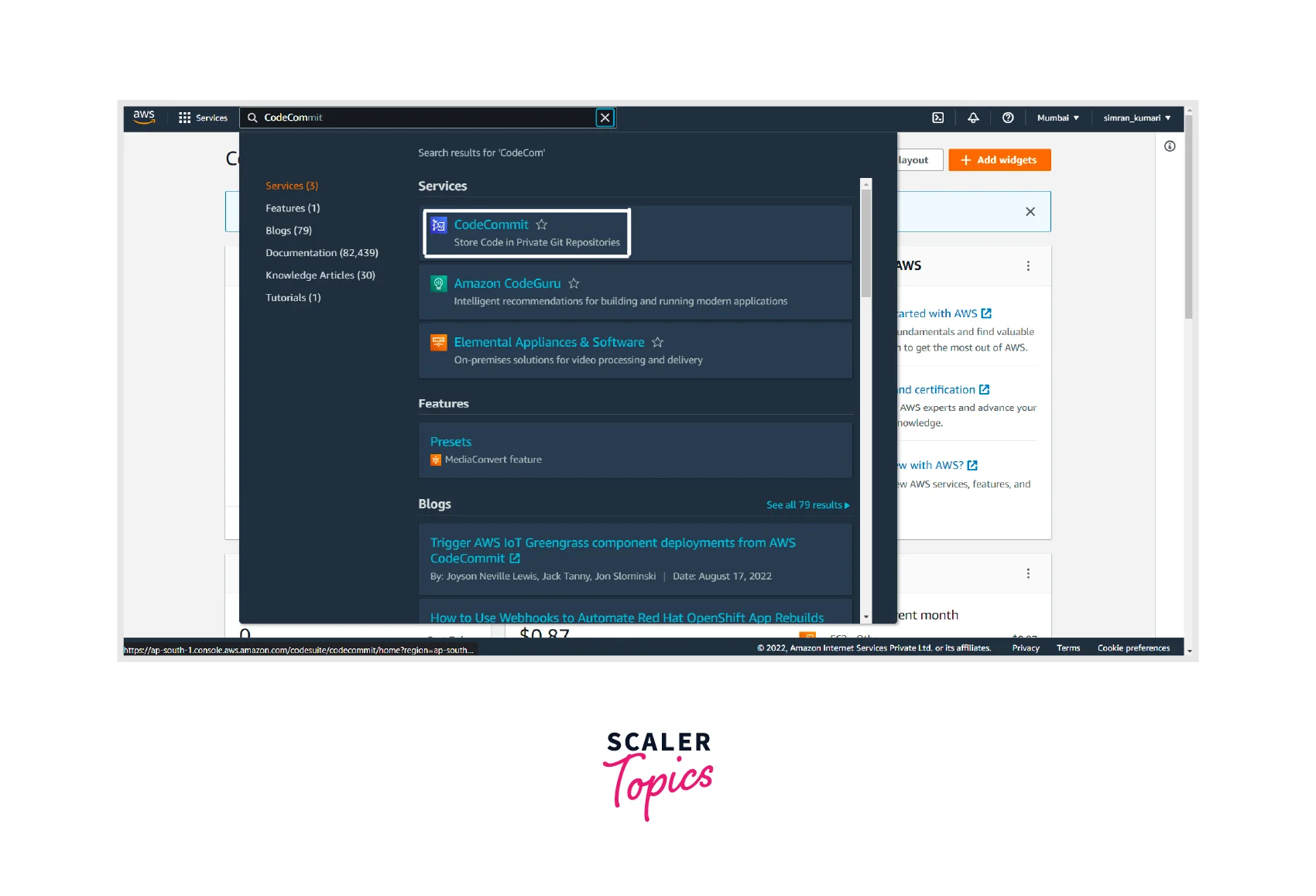
-
Next, we need to click on the Create Repository option to create a repository.
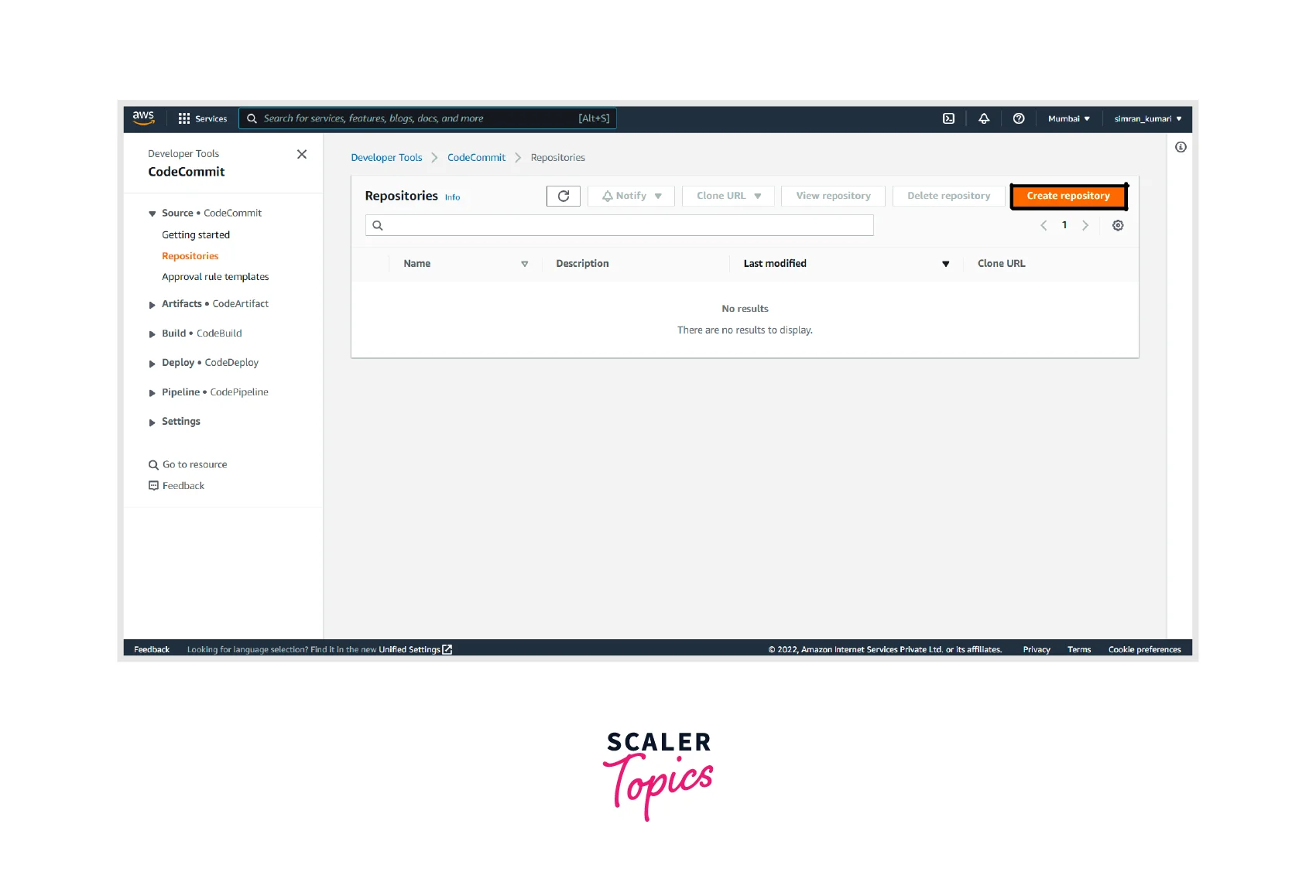
-
On the next page, provide the details to add your Repository Name and Description. Add those and click on Create. [IMAGE_6 START SAMPLE]
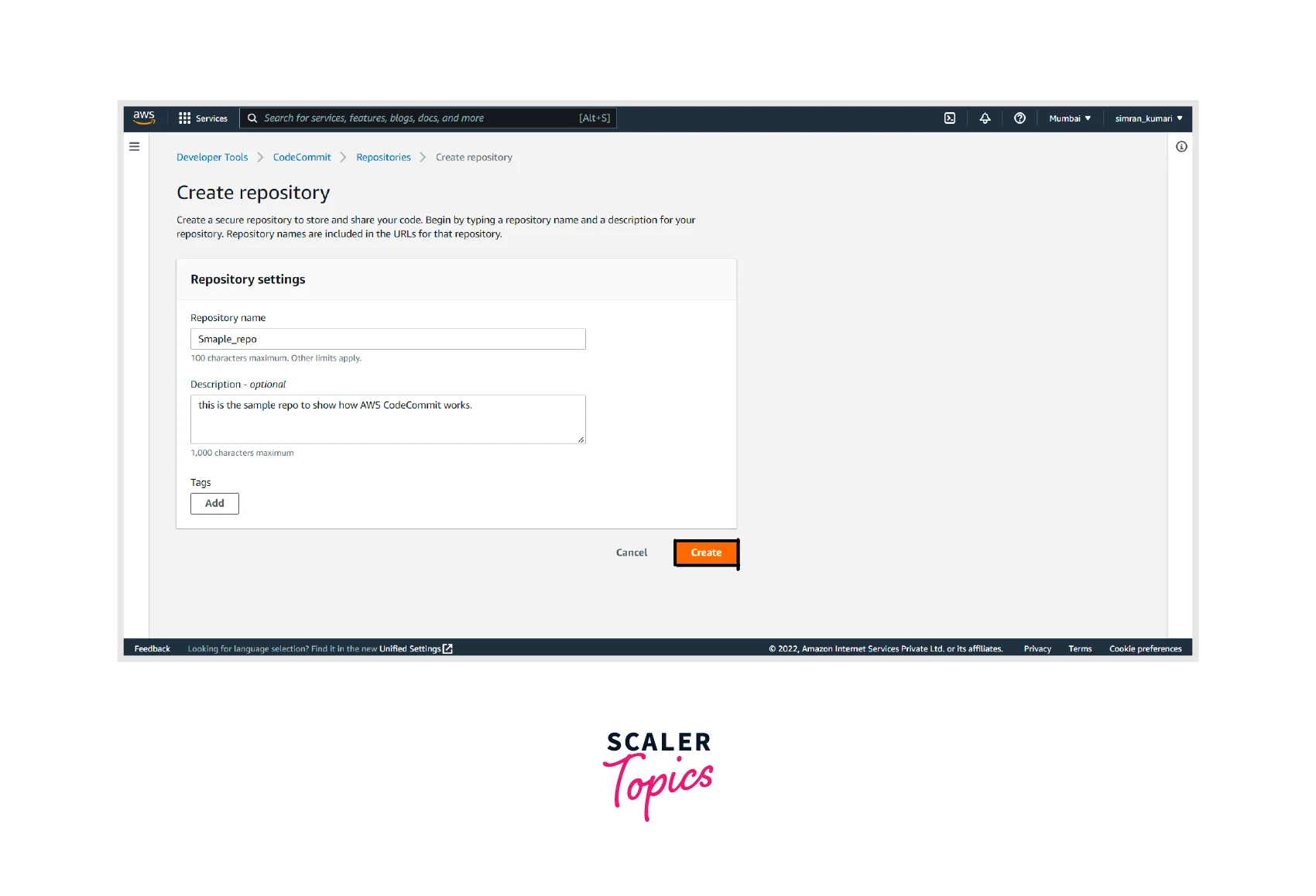
-
A success message appears to confirm that your repository has been created.
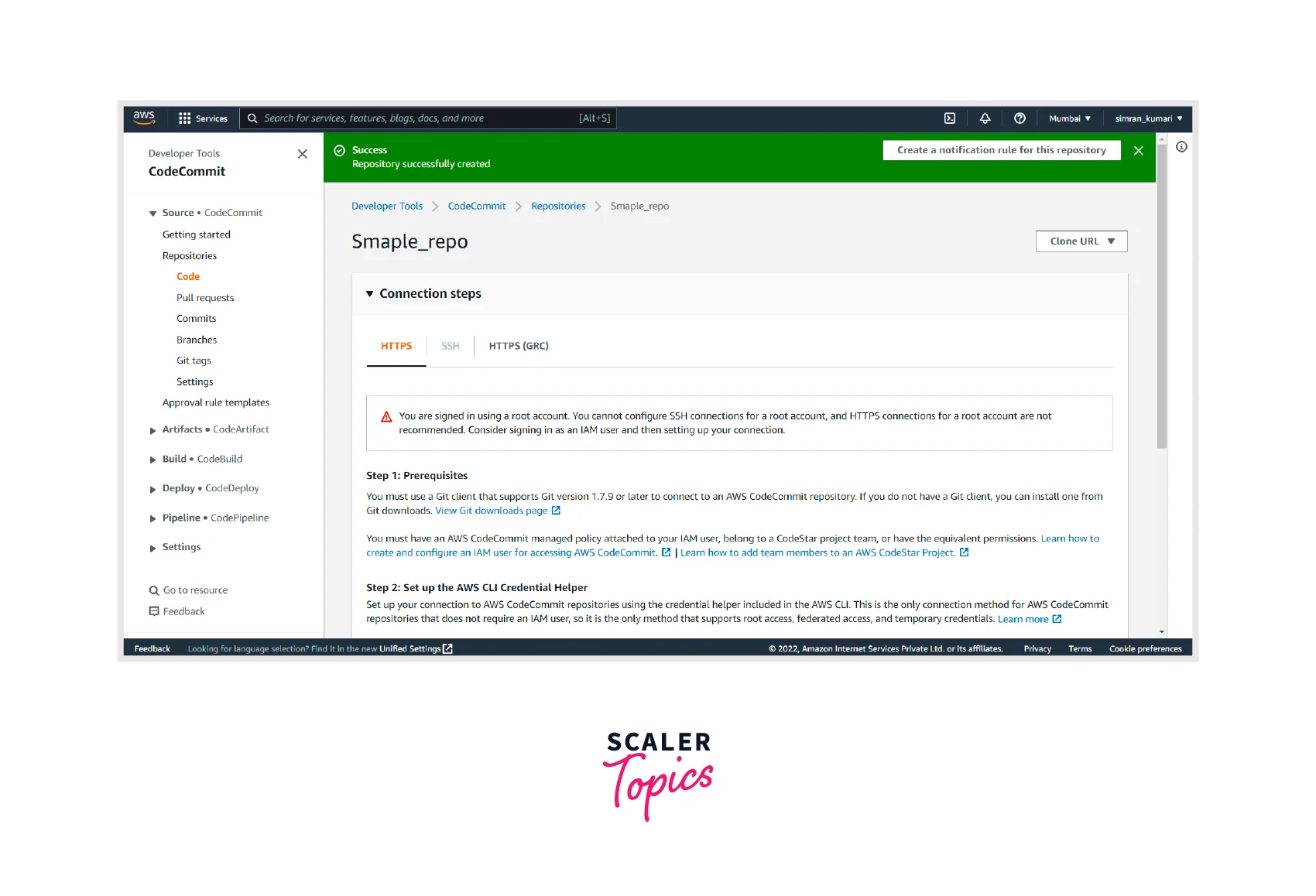
-
Let's connect to our repository using HTTPS. The created repository is always empty, so let's add and create some files in it by clicking on create the file.

- After creating the file, add some information to the file.
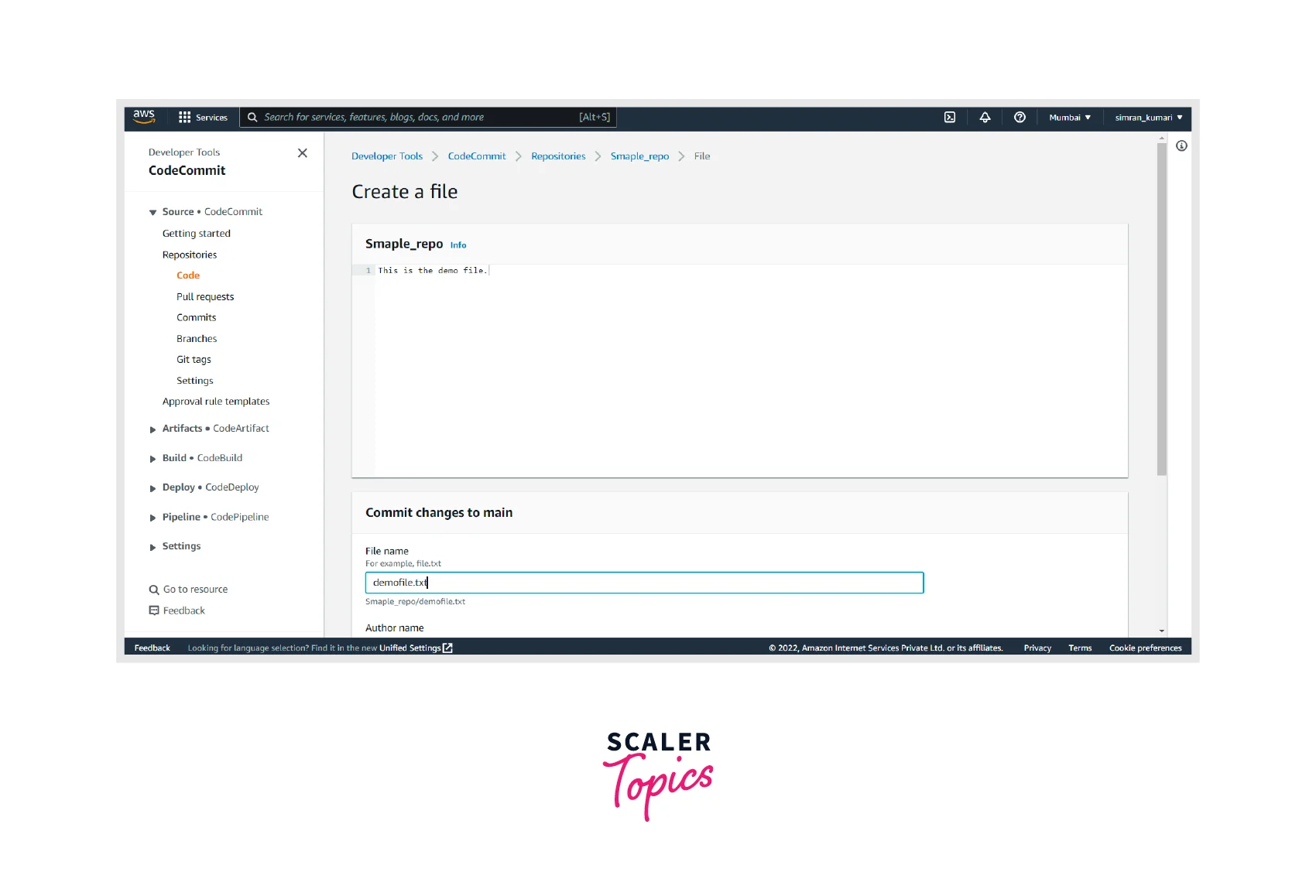
- After adding the information in the file, commit these changes by adding the filename, author name, email id, and commit message and click on Commit Changes.
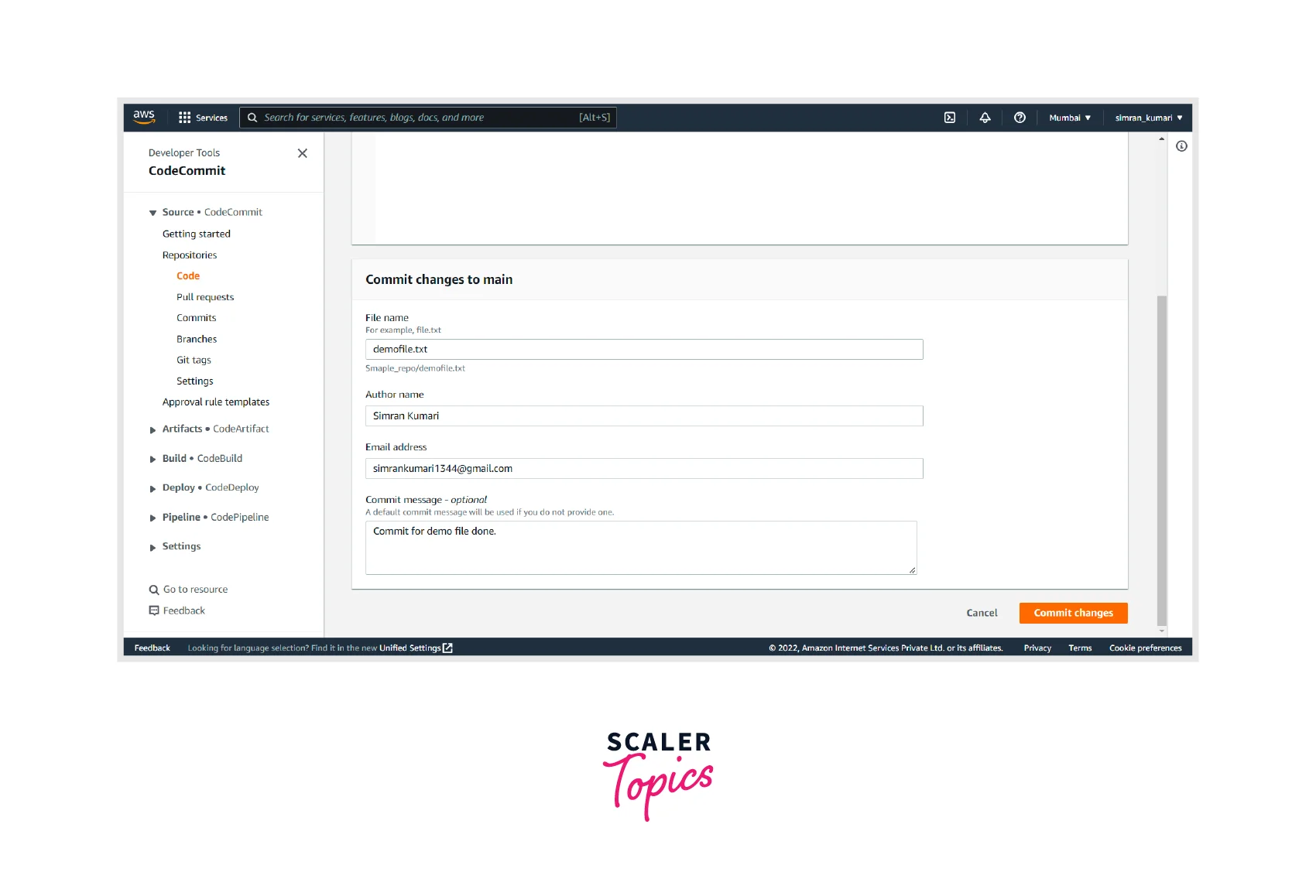
- After committing the changes, navigate to the Repository section by clicking on Repository.
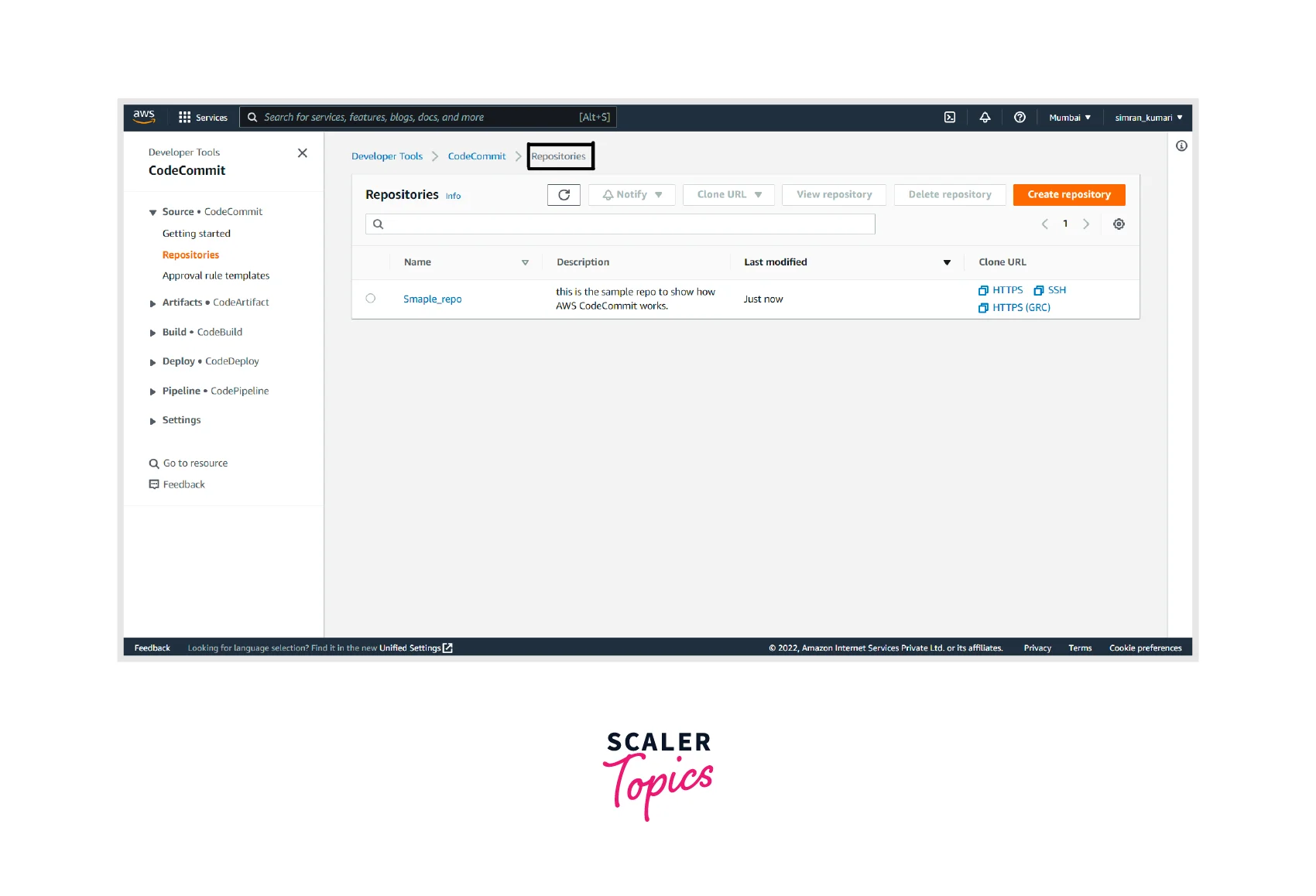
The Sample_repo is successfully created. Let's move to our second step, to create branches.
- To create branches, Go inside the repository.
-
Click on Branches from the sub-menu.
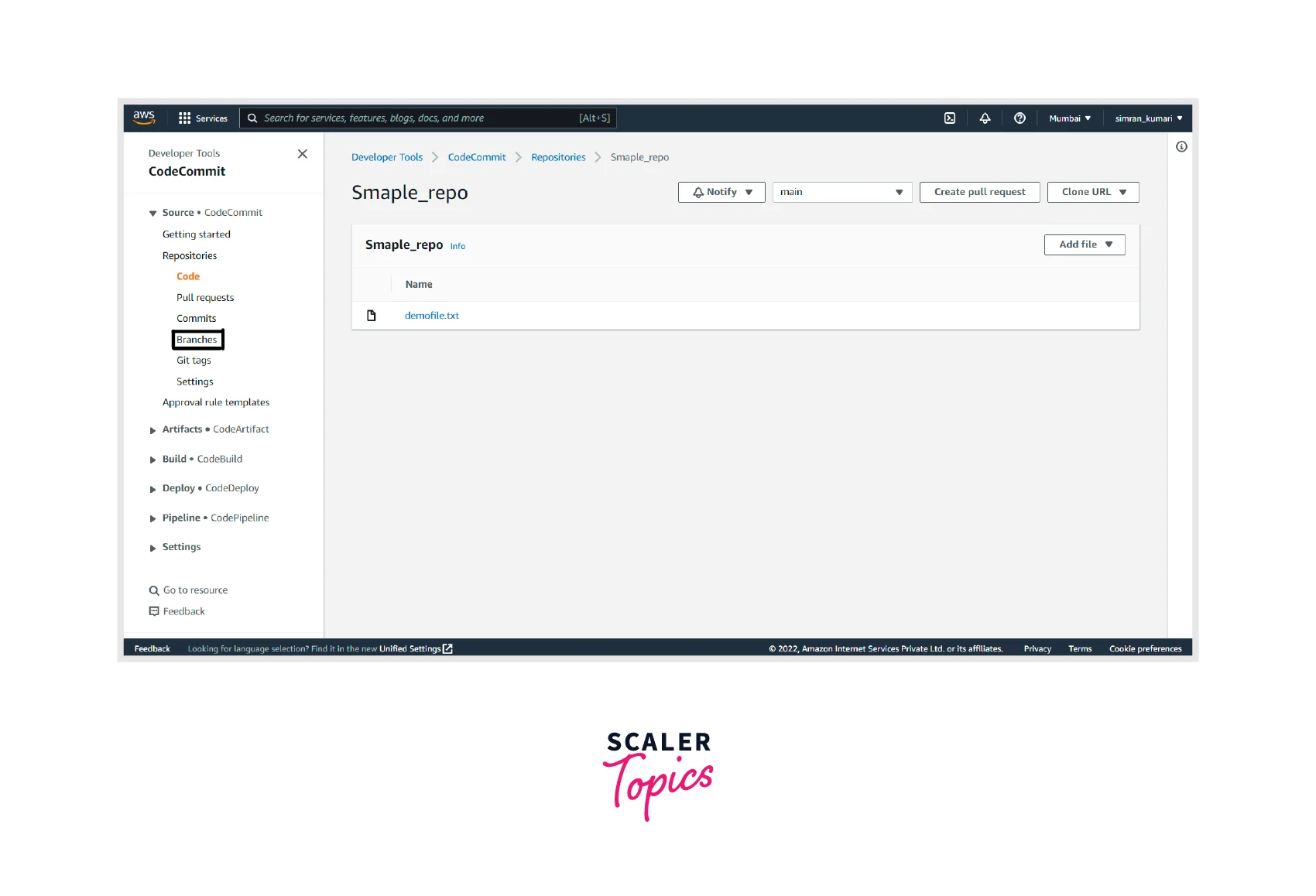
-
Click on Create branch.
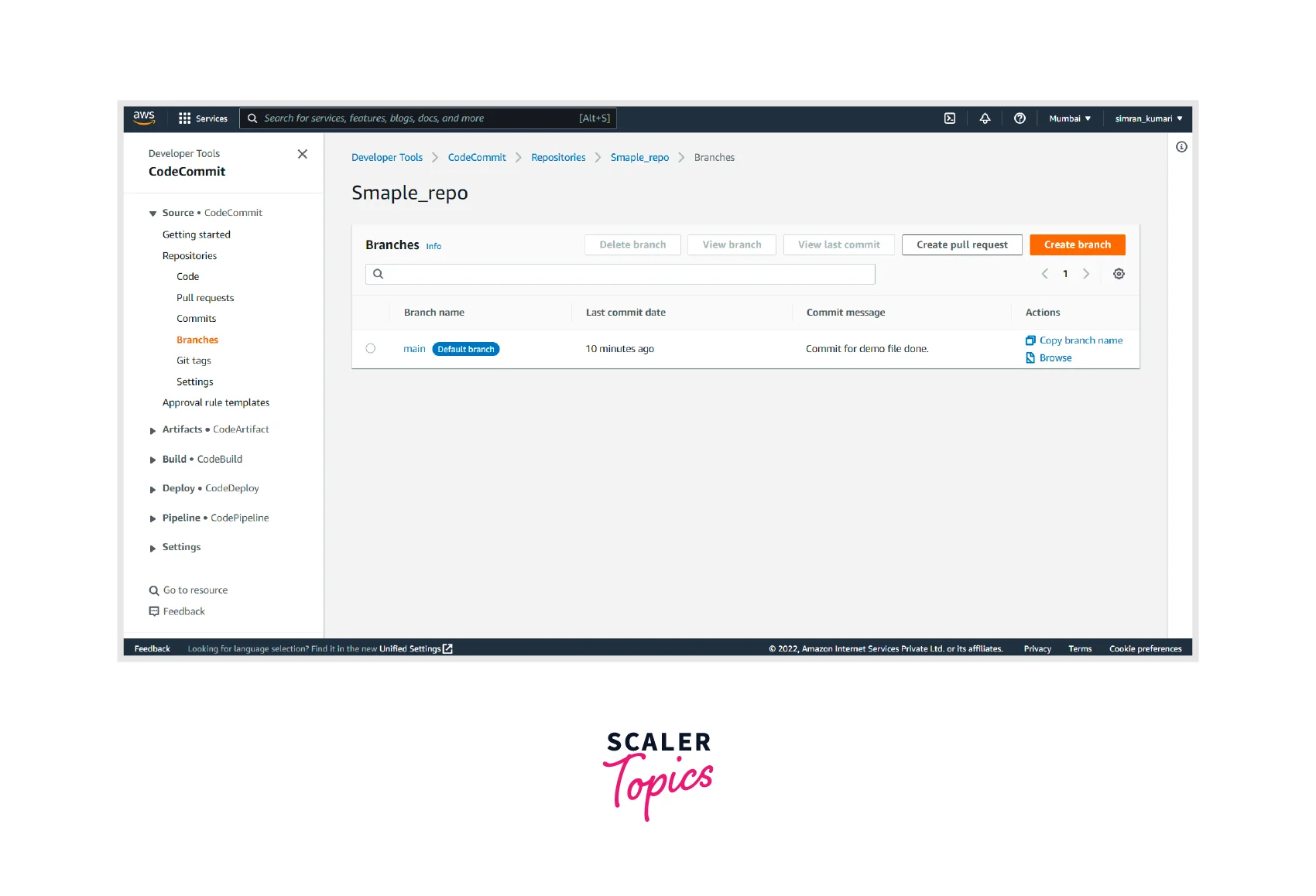
-
Add branch name and choose the main branch and click on Create branch.
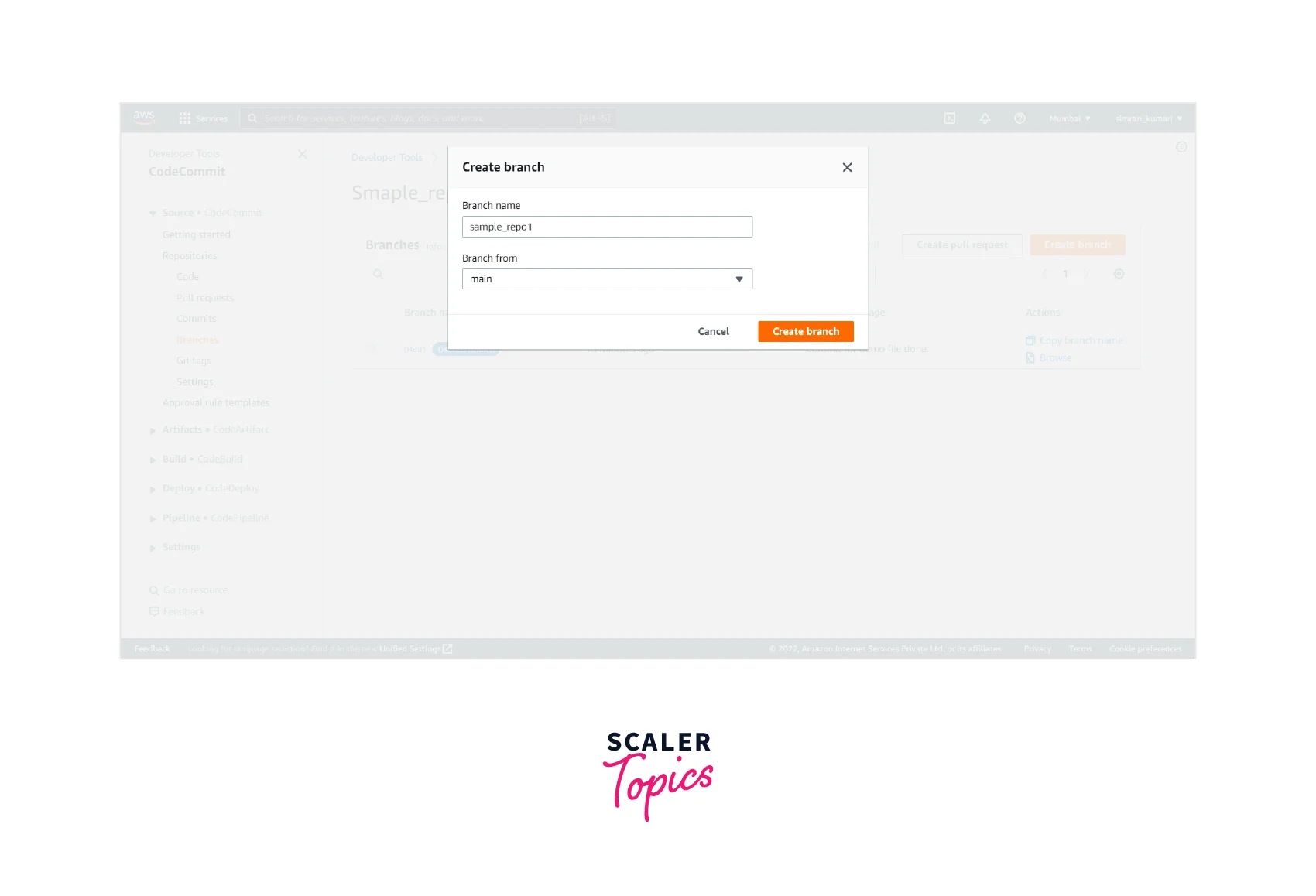
-
A new branch(sample_repo1) is created.
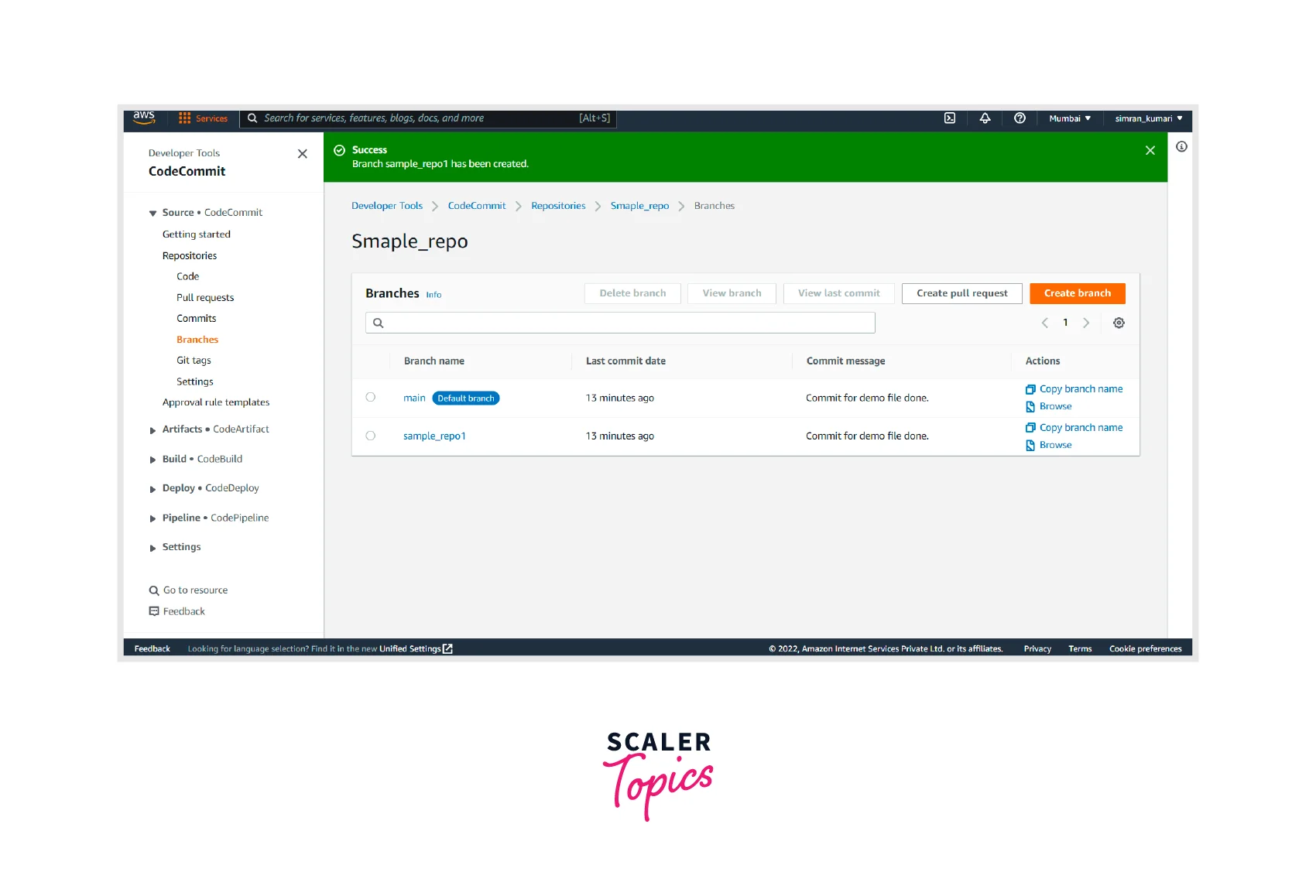
- Click on the sample_repo1 branch. It contains all the files that exist on the main branch.
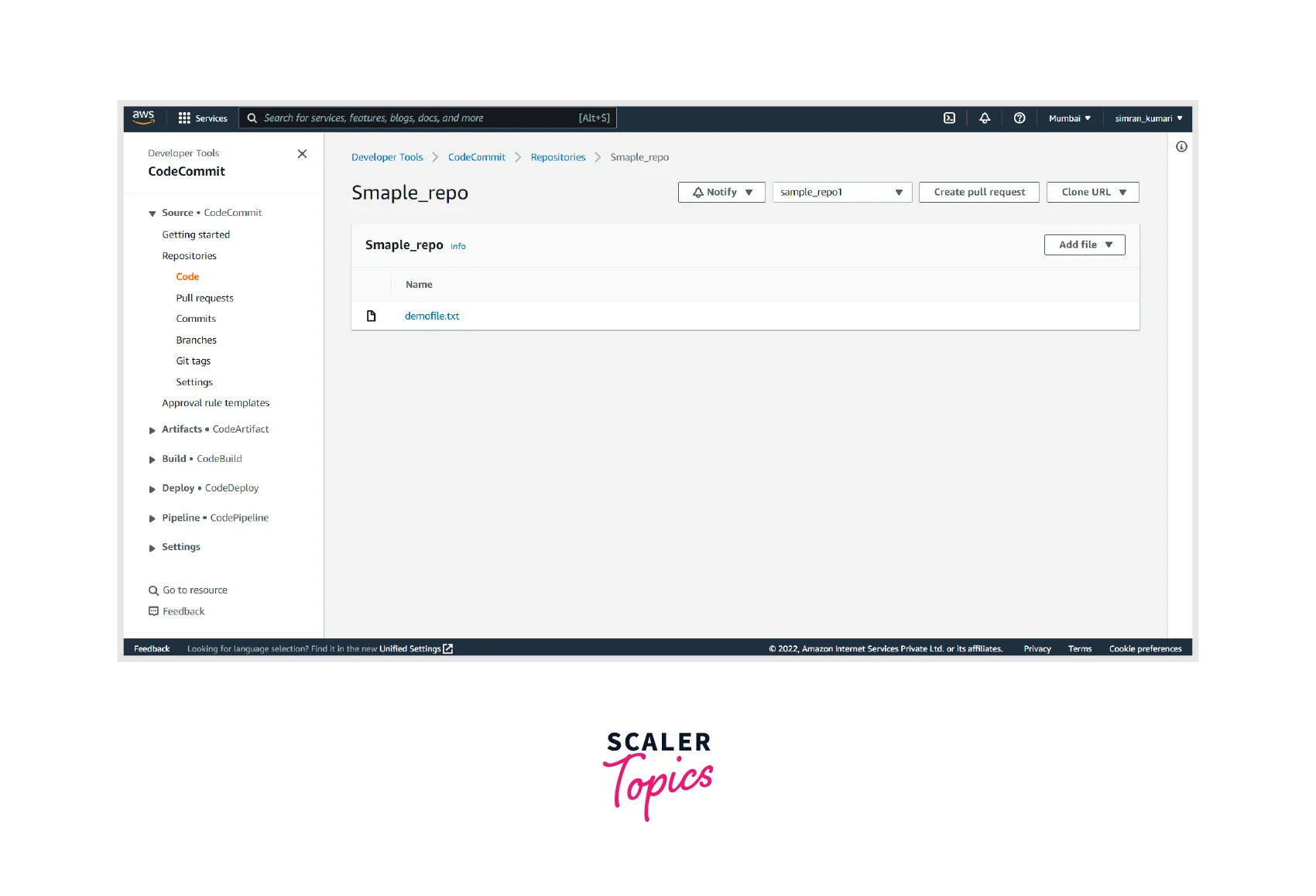
- Let's make some changes in this branch. Click on the file demofile.txt and click on Edit.
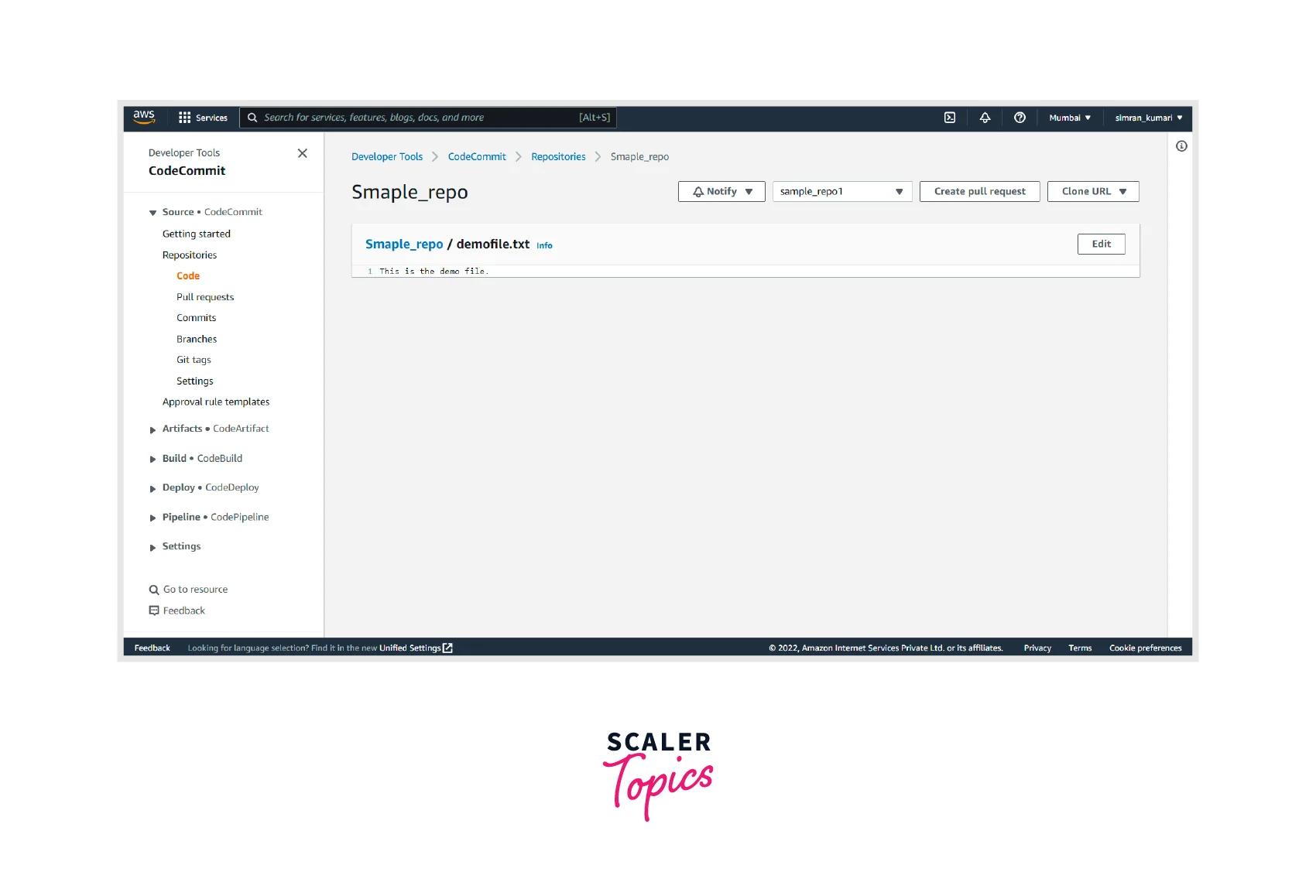
-
Do some changes in the file.
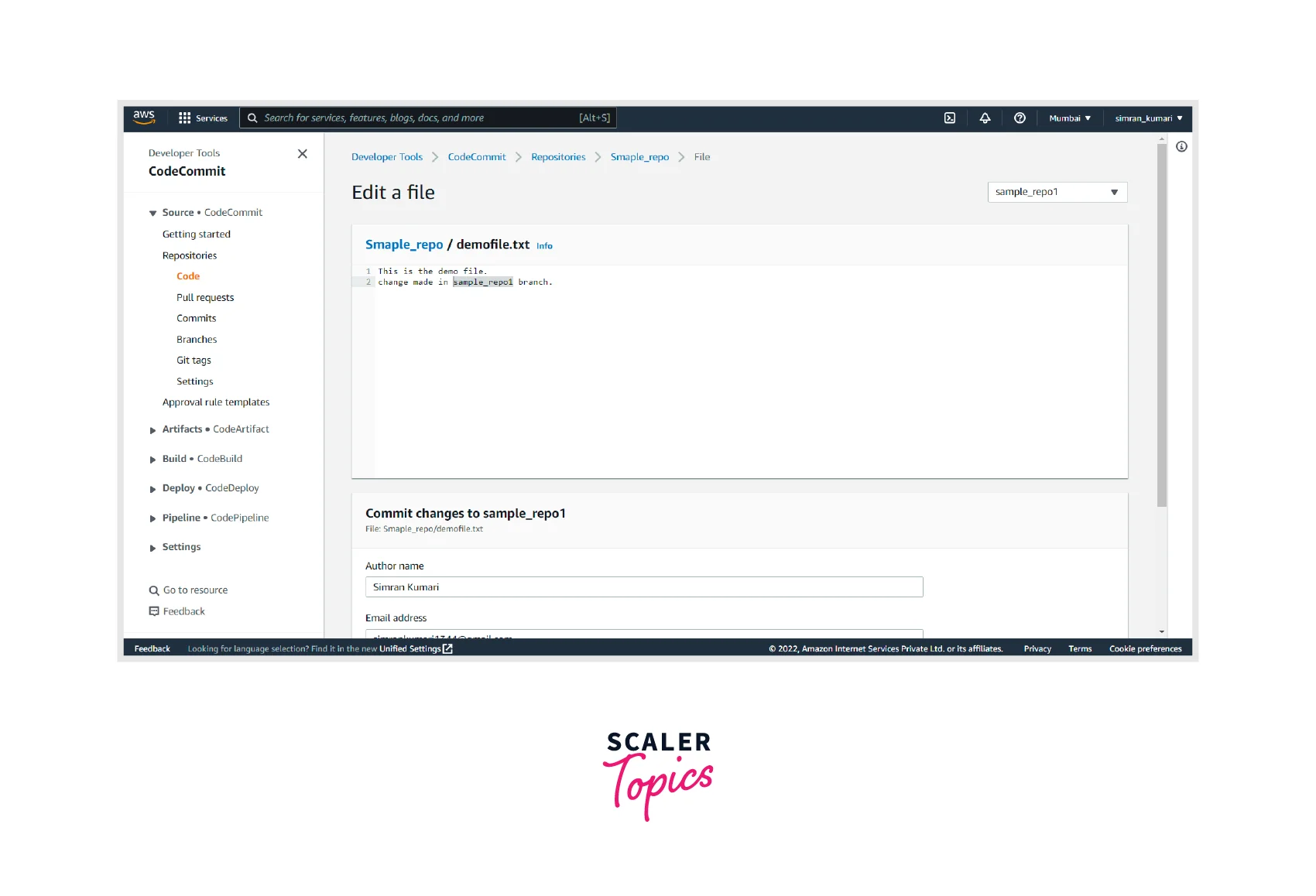
-
Commit those changes by adding the author name, email id, and commit message and click on Commit Changes.
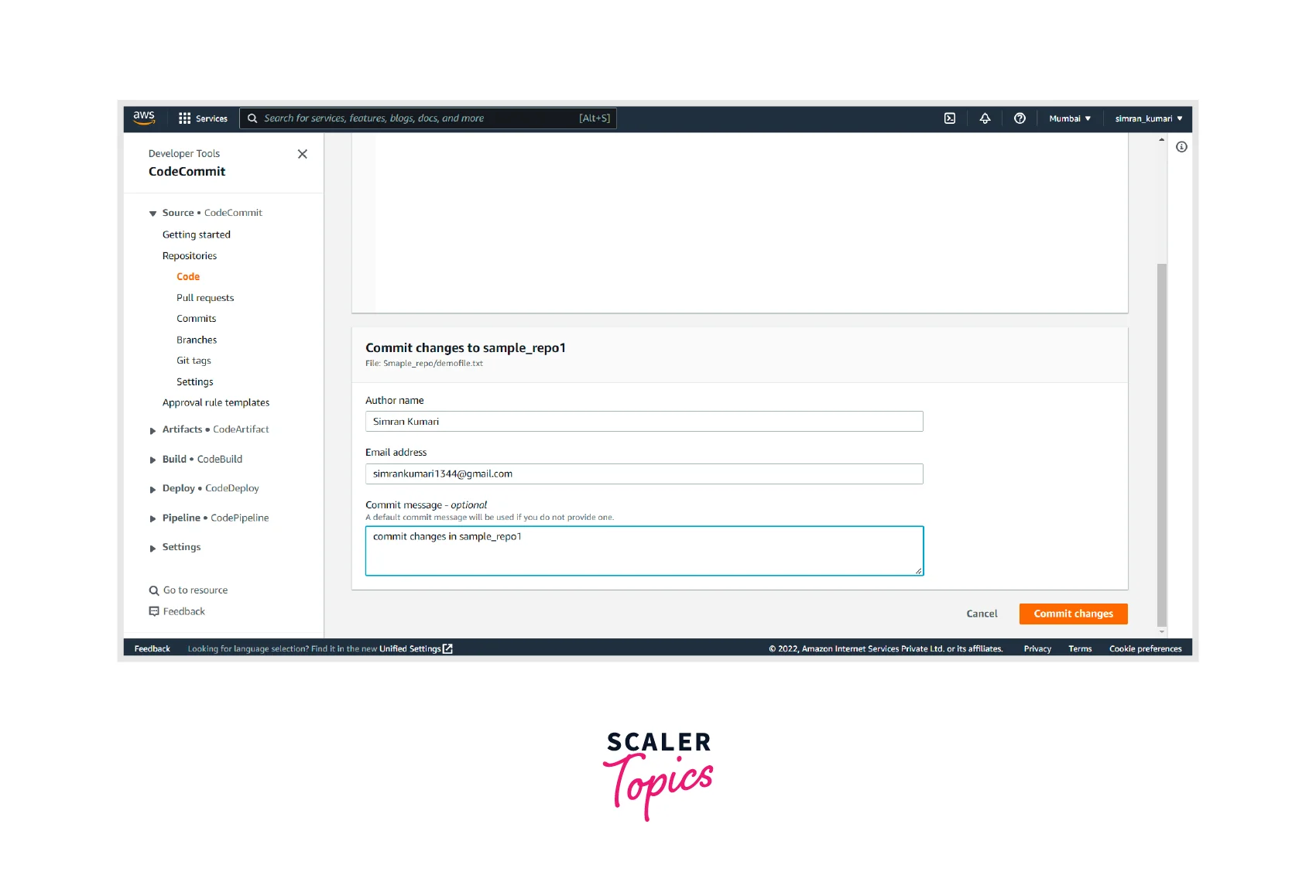
- A success message popped up.
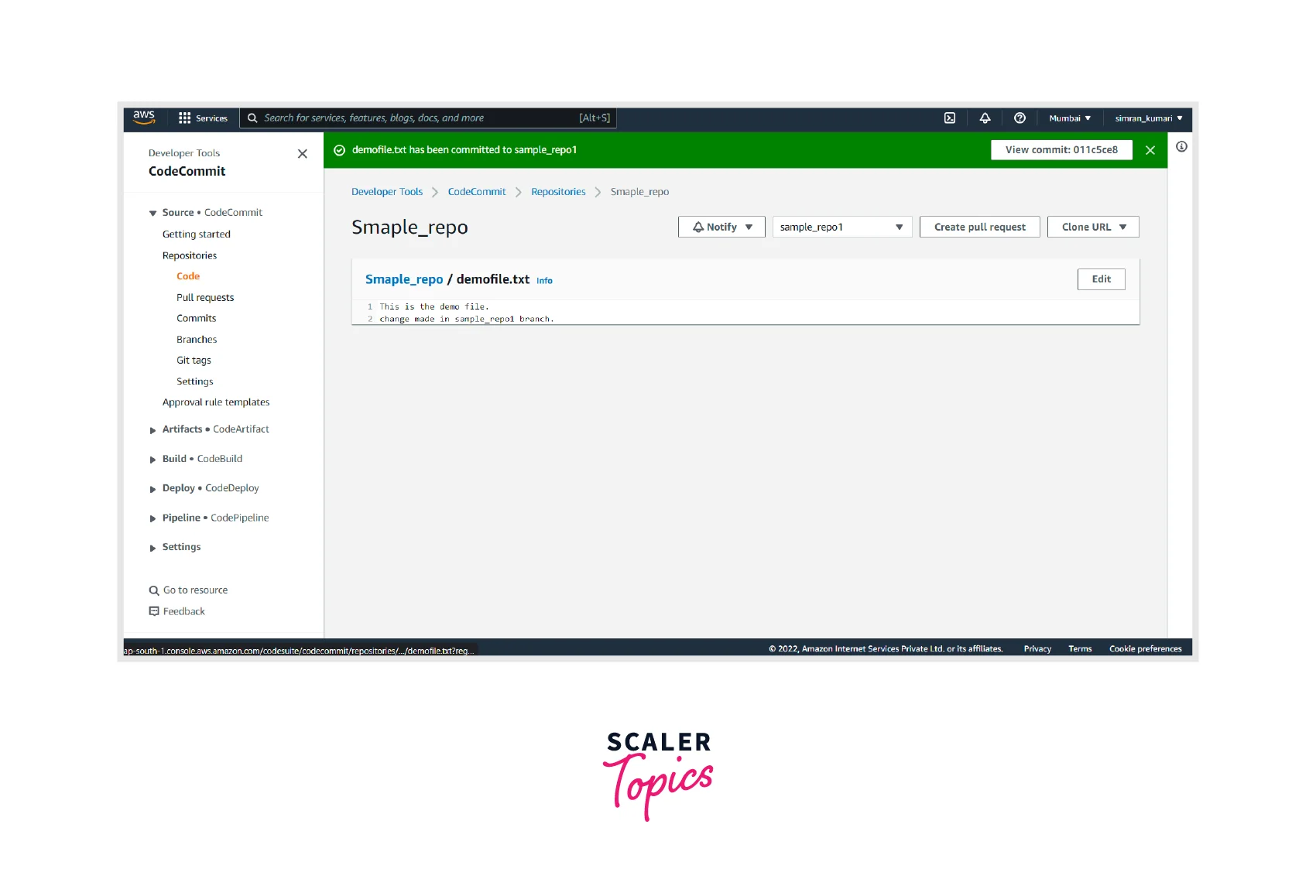
Now in this repository, two branches are there main and sample_repo1 branches which are a little different from the main branch.
- Let's create a pull request to compare the differences in the branches and then merge it into the main.
- Click on Crone Pull Request.
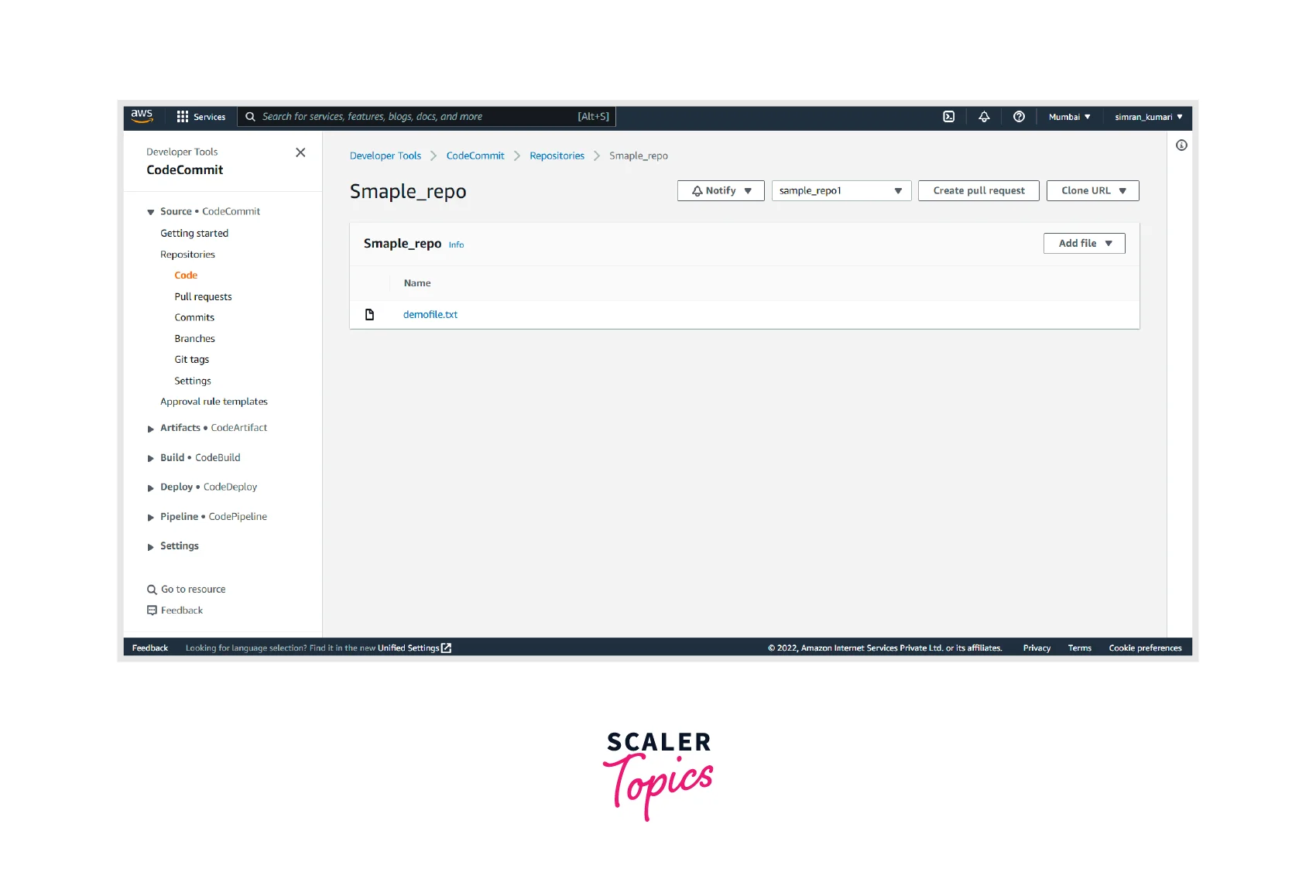
- It will compare the current branch with the main branch. Click on Compare.
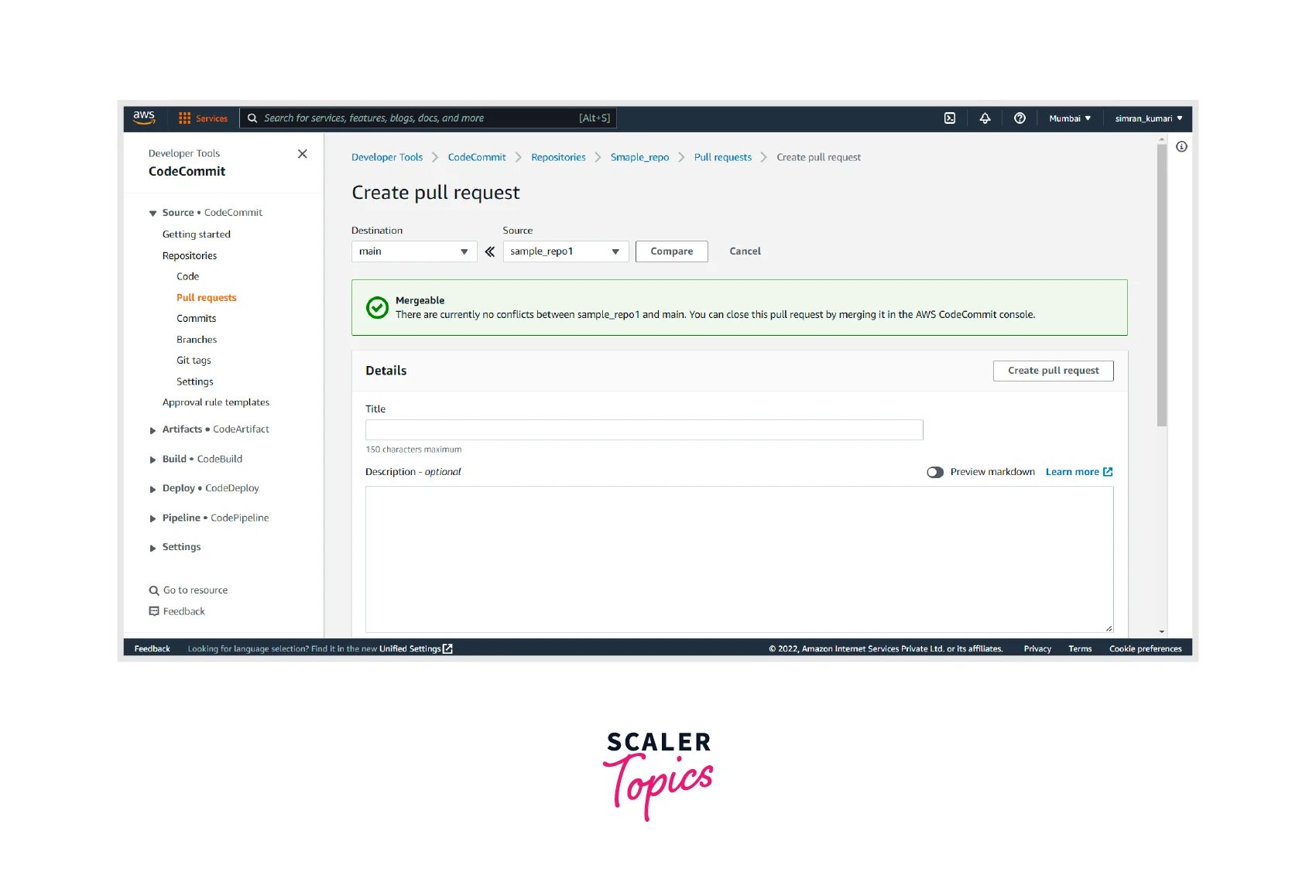
- This shows all the differences between the main and the other branch.
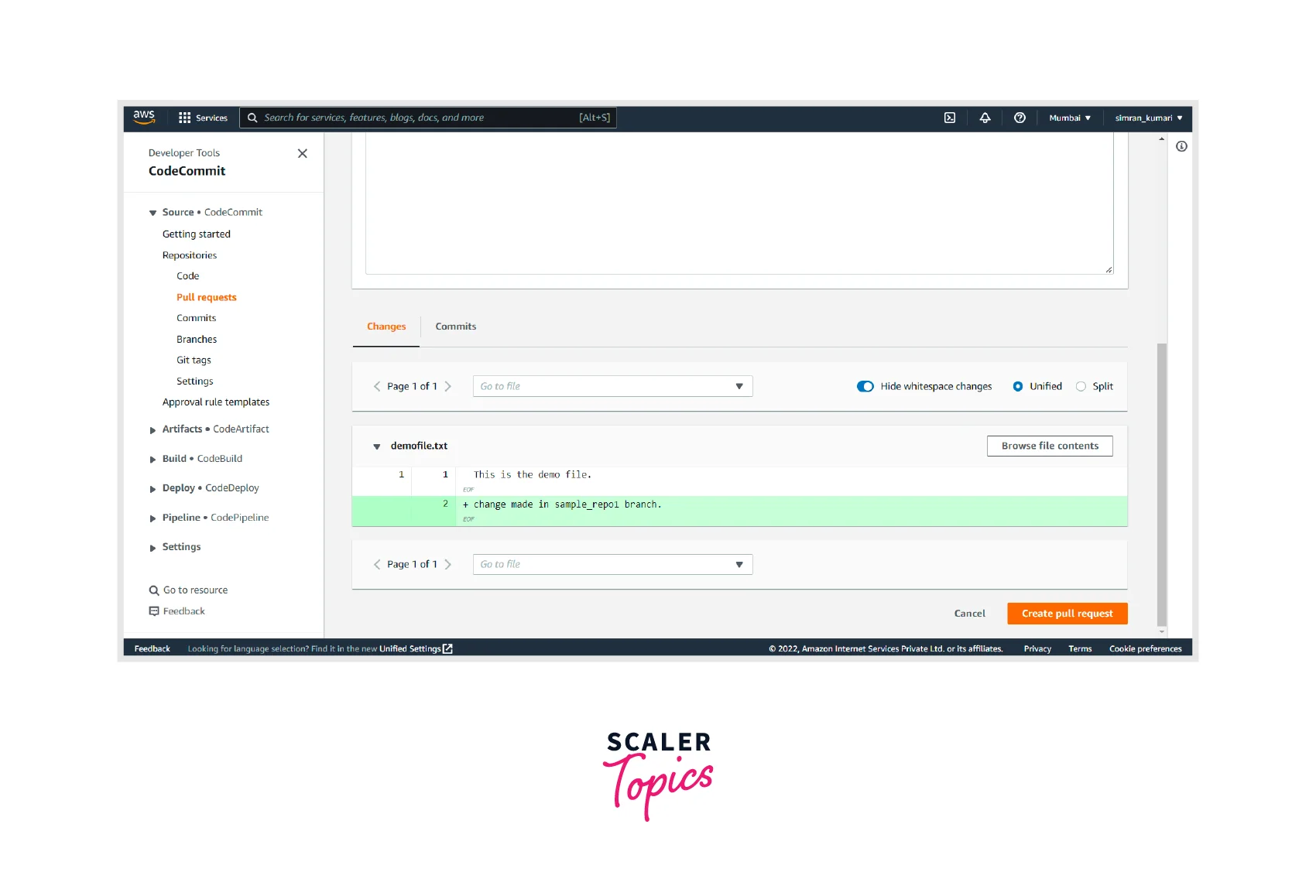
- To check the commit history, we need to click on the Commit button next to changes.
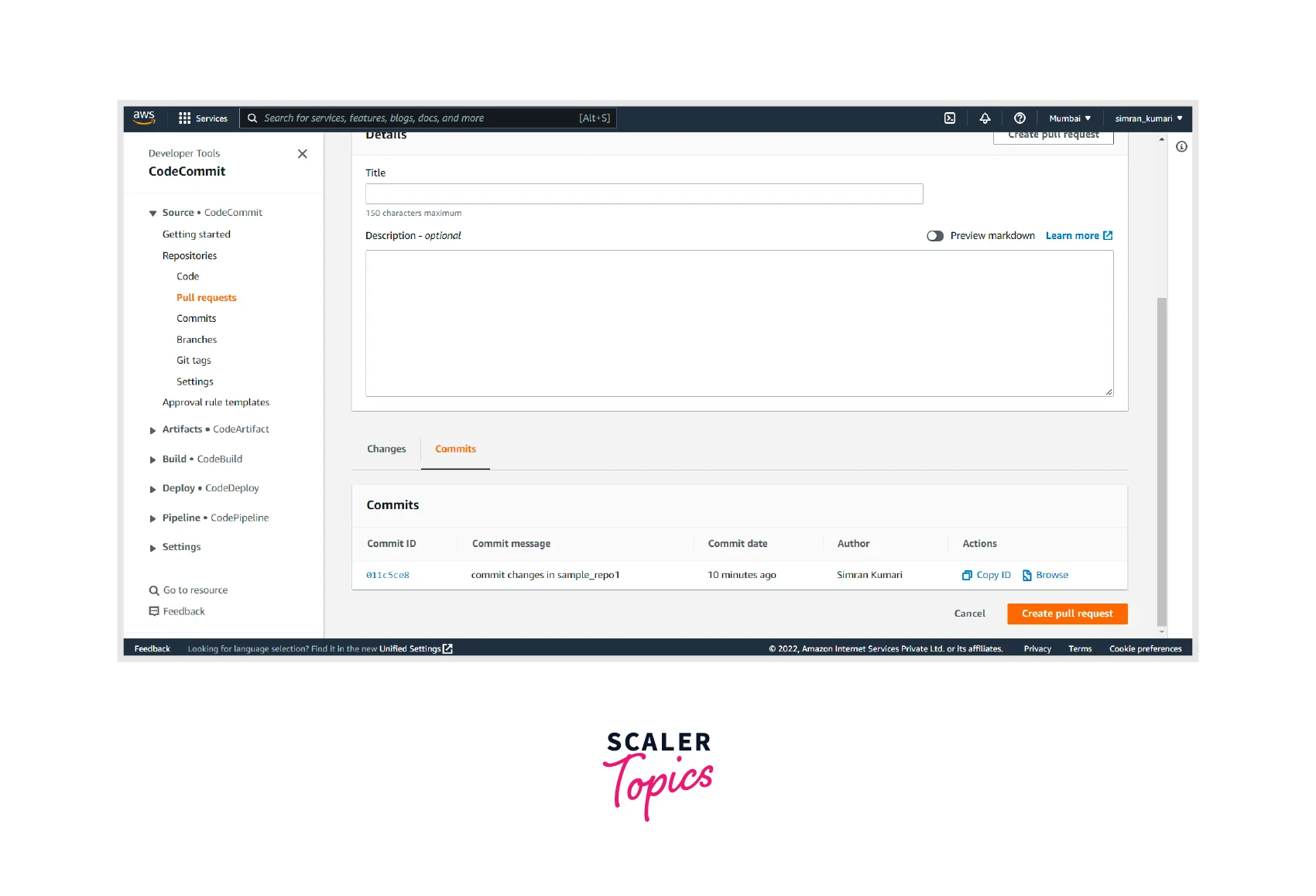
- To reflect these changes to the main branch, merge these two branches by adding Title and Description and clicking on create a pull request.
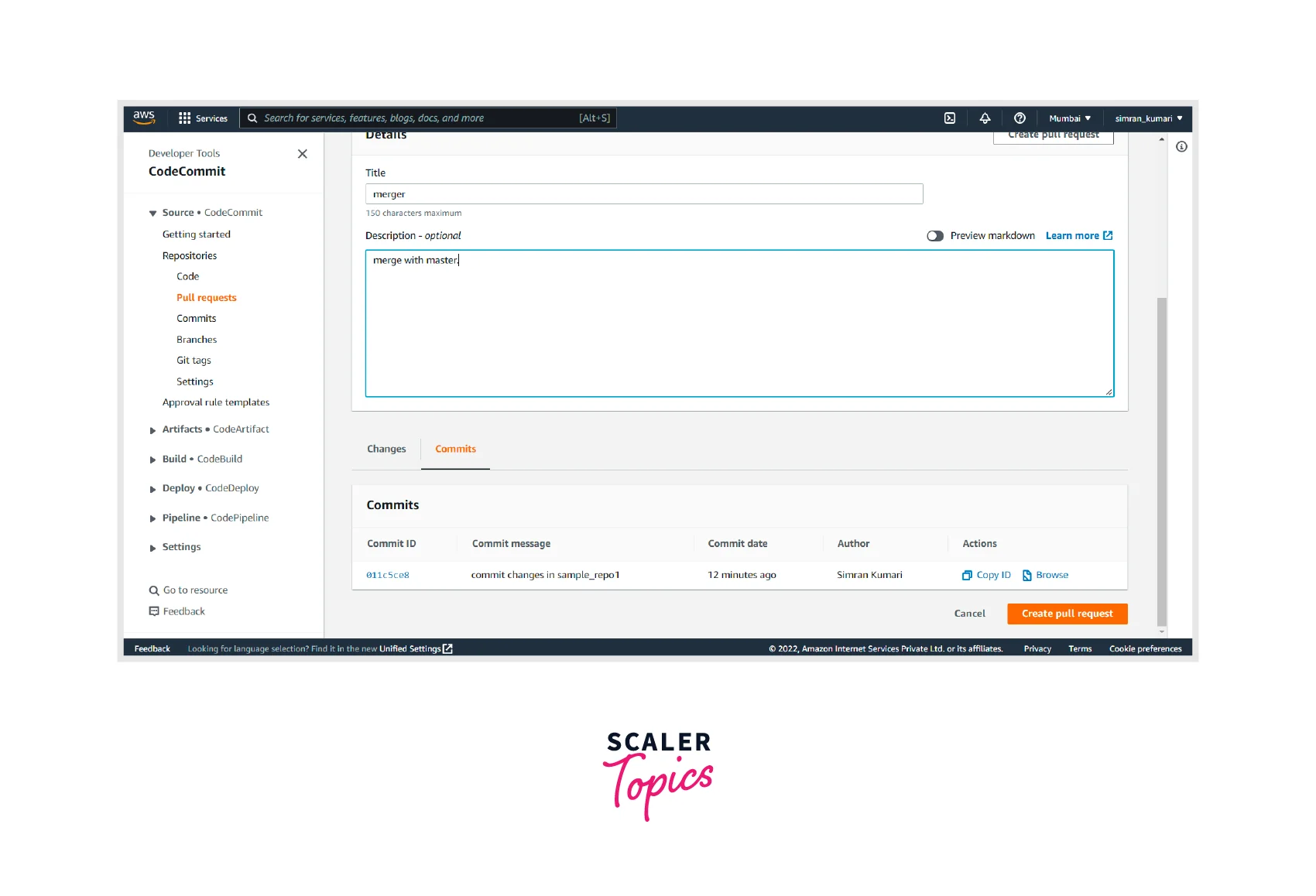
- A successful pull request notification popped up.
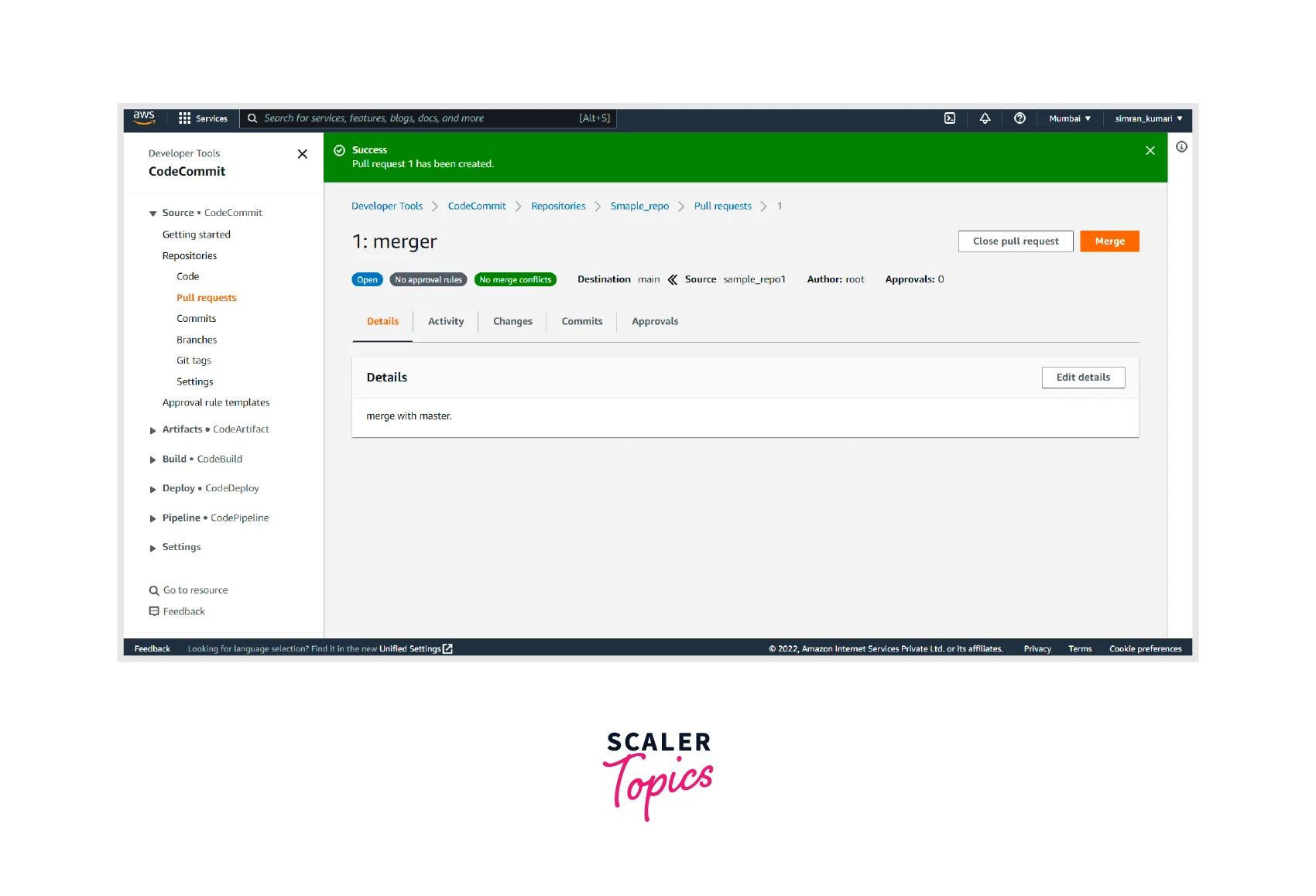
- Click on Merge to finally merge these two branches.
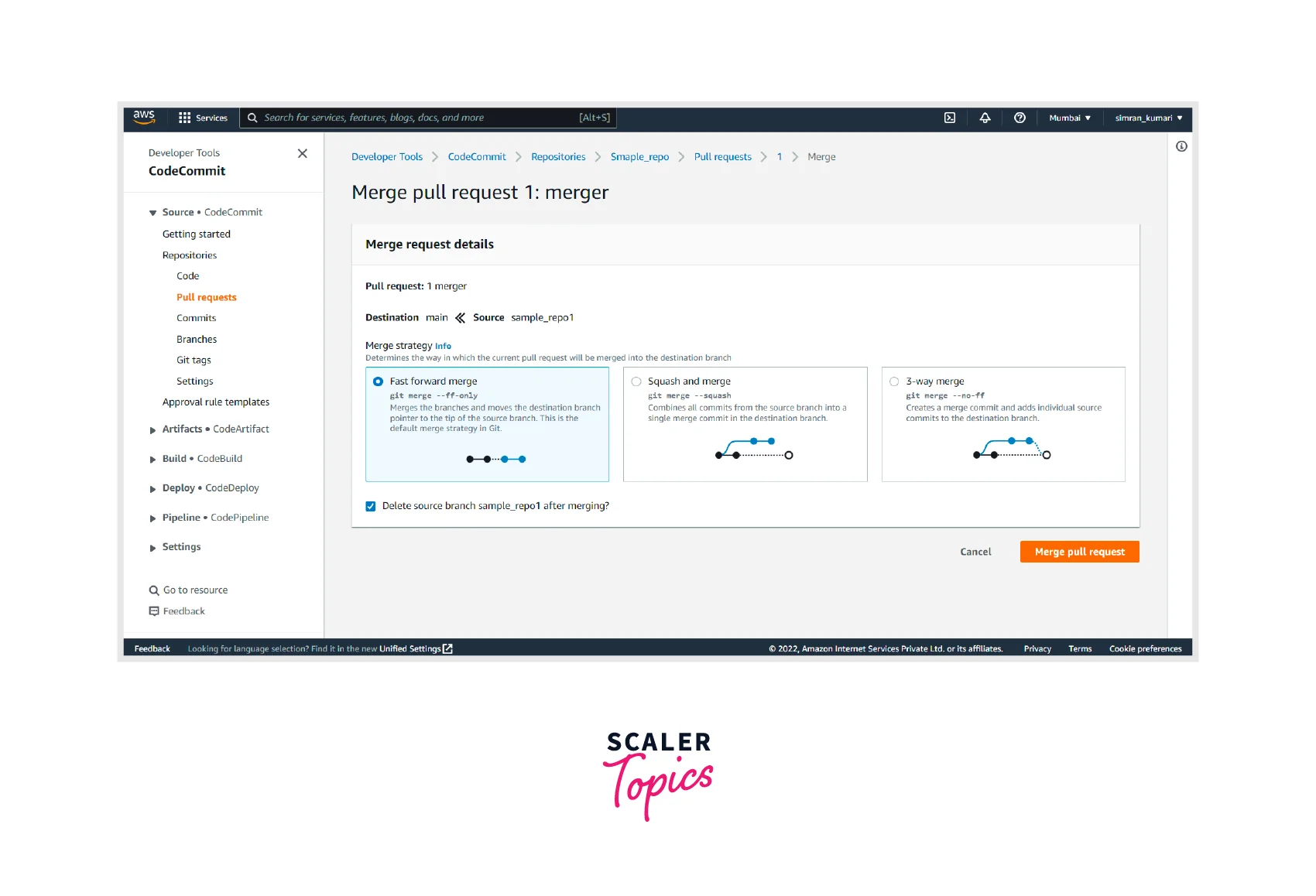
- It shows different Merge strategies. Let's choose fast-forward merge. It also asks about the branch whether to keep the branch or delete it. Let's turn it off and click on the Merge pull request.
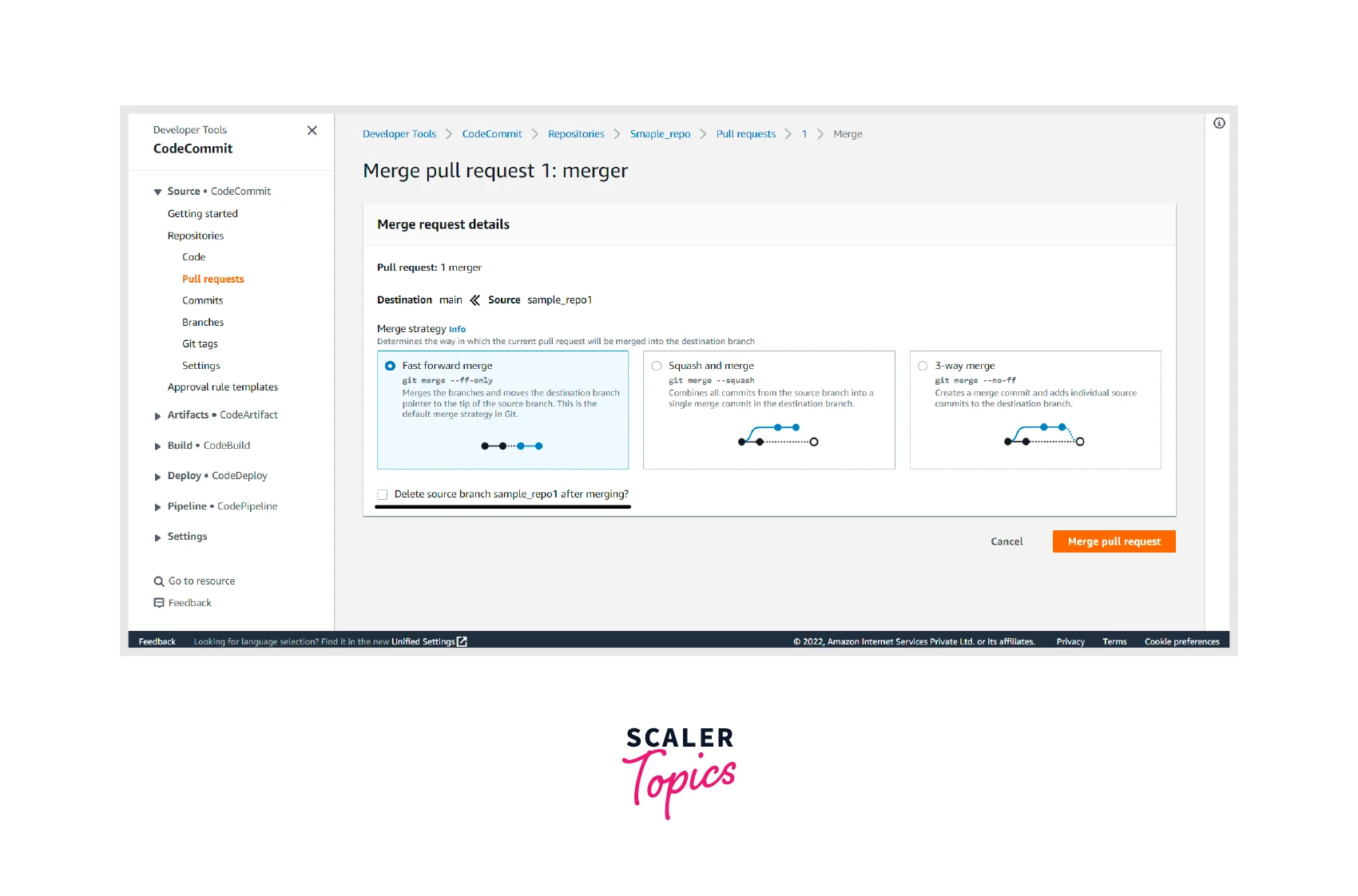
- A success message popped up, i.e., the merge was done successfully.
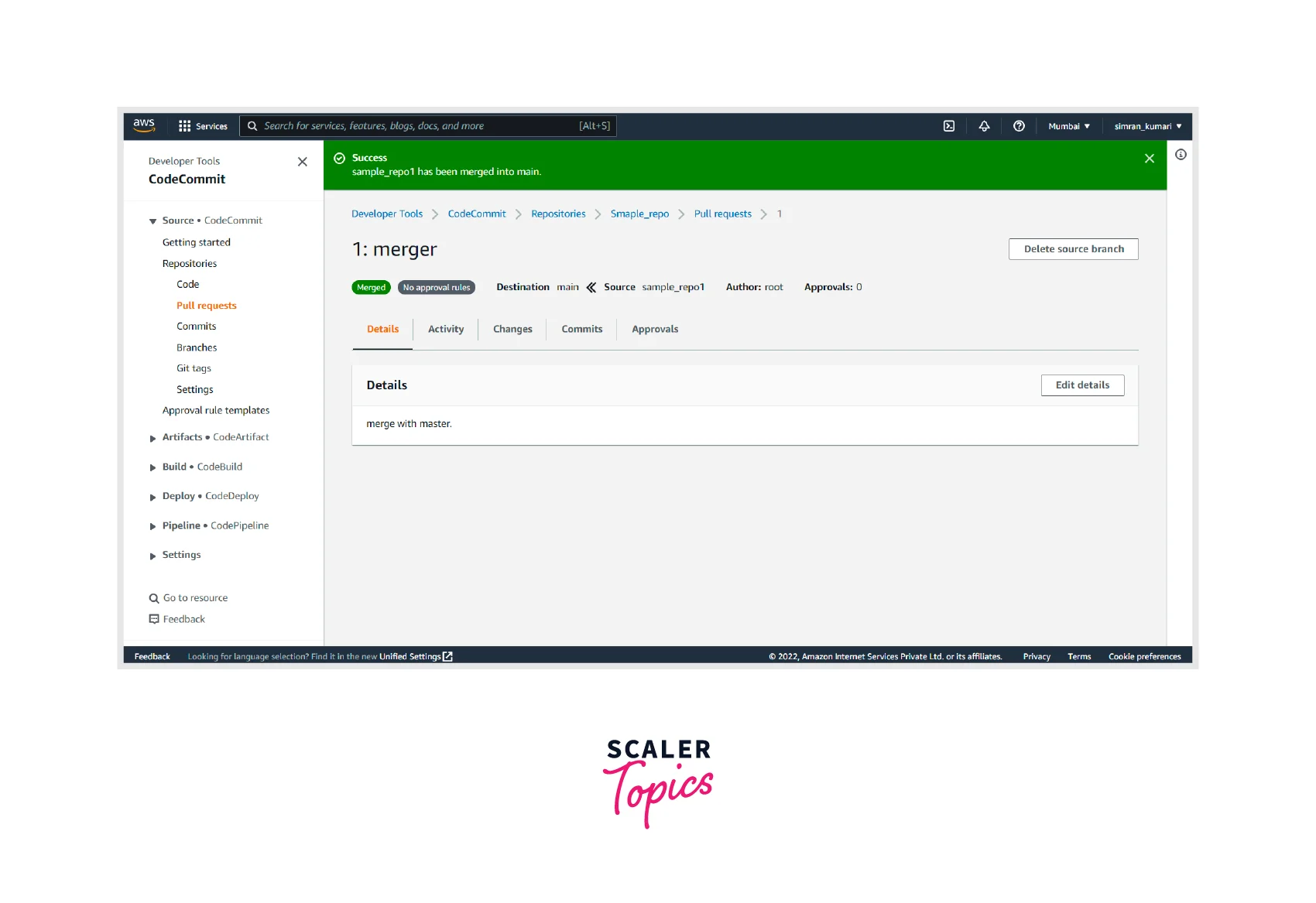
Now, after checking the main and sample_repo1, the file is updated. So, This is a simple demo of practice implementing AWS CodeCommit.
Benefits of AWS CodeCommit
The benefits of AWS CodeCommit are the following:
- AWS CodeCommit helps in a faster development lifecycle.
- The transfer of incremental changes instead of the entire application increases the speed and frequency of the development lifecycle.
- It eliminates the administrative expenses from the user end of managing their software and hardware on the cloud and is fully managed by AWS.
- CodeCommit comes with the asset of Git command, and that can be used with AWS CLI and API.
- CodeCommit helps to cross-link two different AWS accounts making it easier to share repositories between them securely.
- CodeCommit has no limit on the size of the repositories or the file types. It stores anything, anytime.
AWS CodeCommit vs GitHub
GitHub is a popular version control system. Let's take a look at how AWS CodeCommit is similar to GitHub.

The similarities are:
- Both are using git repositories and support code review.
- Both support integration with AWS CodeBuild.
- Both of them use two methods of authentication, SSH and HTTPS.
They are also some differences between the two. Let's see what the differences between AWS code commit and Github are:
- AWS CodeCommit is more secure than GitHub, as it uses IAM (Identity and Access Management) for user-level or specific API-level security, and the repositories are encrypted.
- GitHub allows storage of files up to 100 MB, whereas there is no restriction in AWS CodeCommit on file size and type.
- Git is like home for GitHub, but when it is used with AWS, it is just like a third-party tool. CodeCommit is hosted and managed by AWS, making integrations with CodeBuild and its usage much simpler. So, both differ in ways of hosting.
Conclusion
- This article teaches about AWS CodeCommit and how we can use it.
- In conclusion, we can say that AWS CodeCommit is a secure, highly scalable, managed source control service that hosts private Git repositories, which Amazon Web Services fully manage.
- It keeps the repositories close to your build, staging, and production environments in the AWS cloud.
- It facilitates the CI/CD pipeline.
